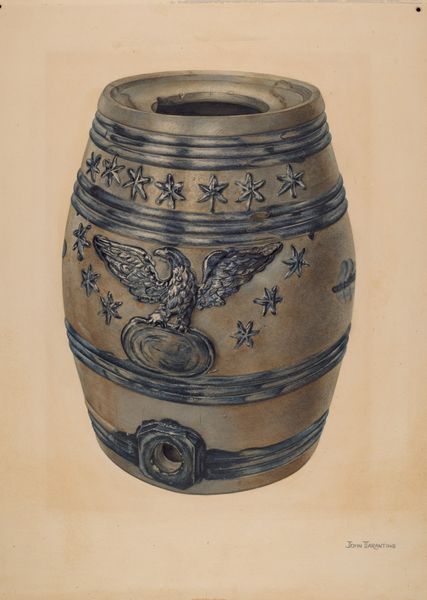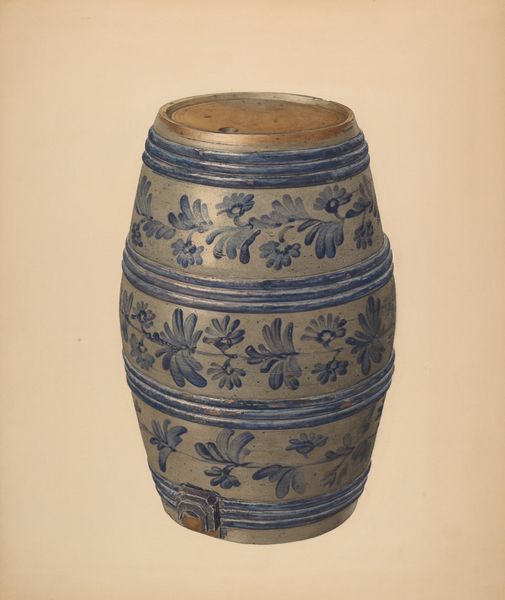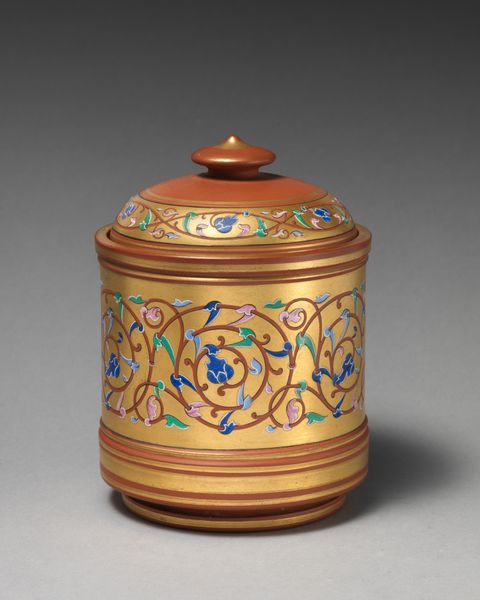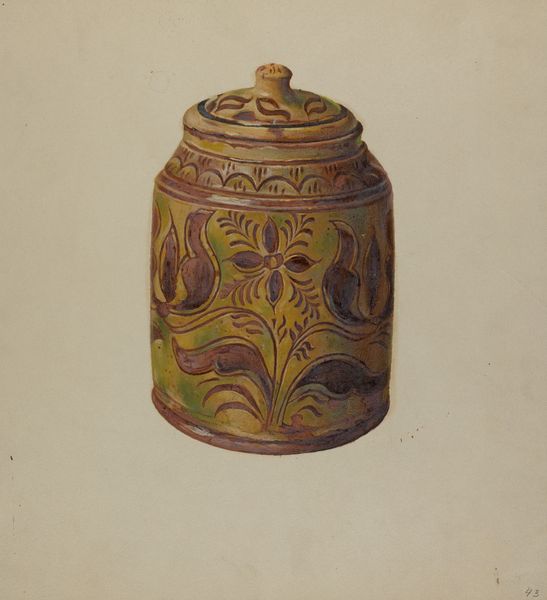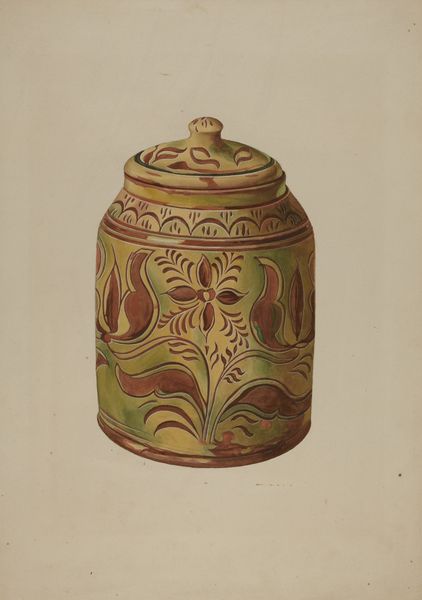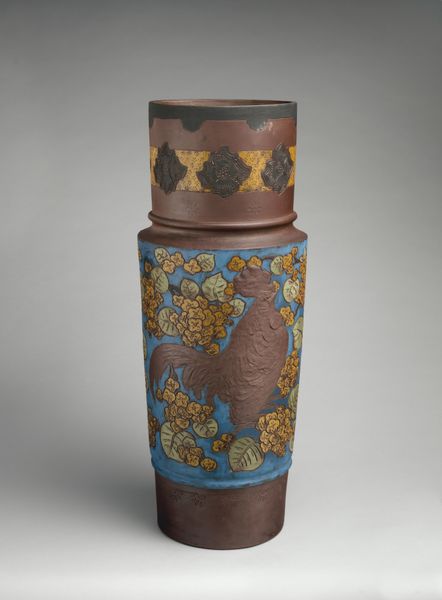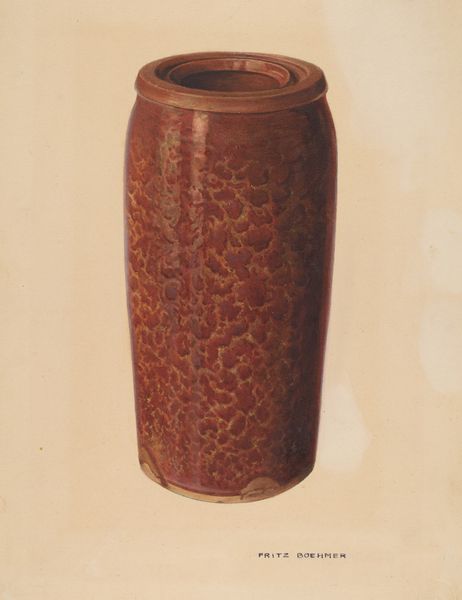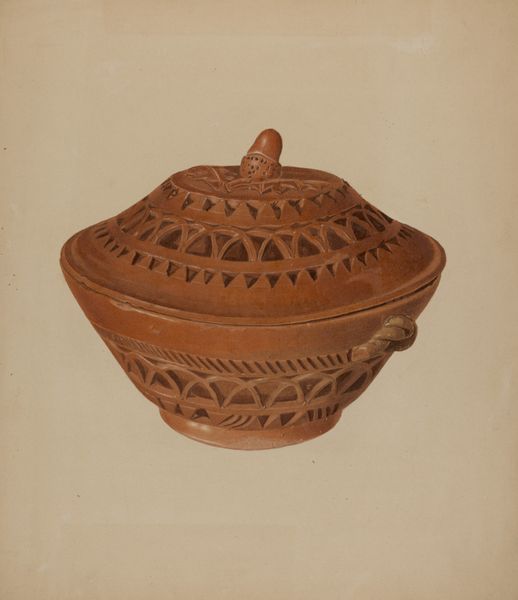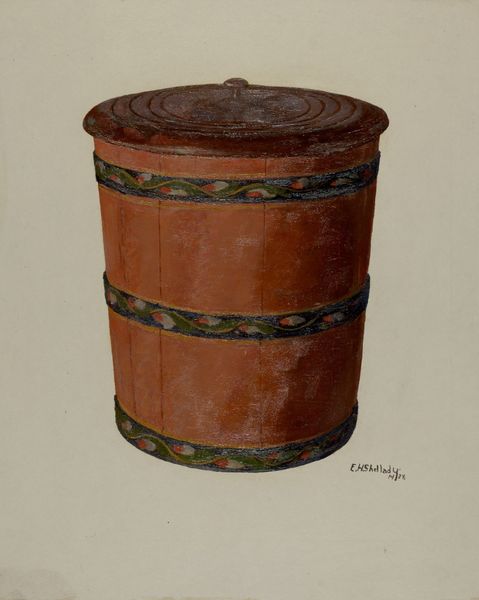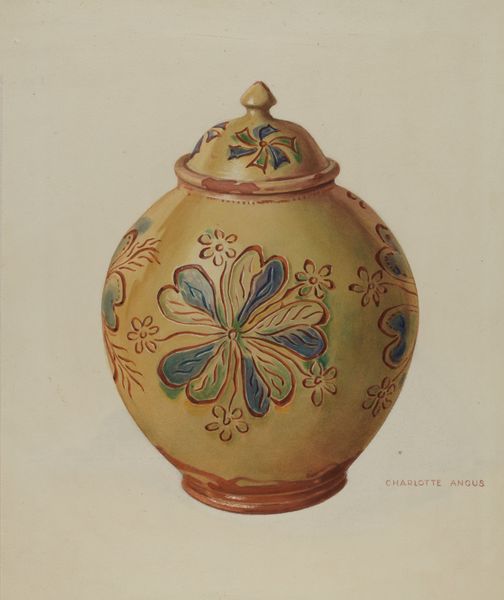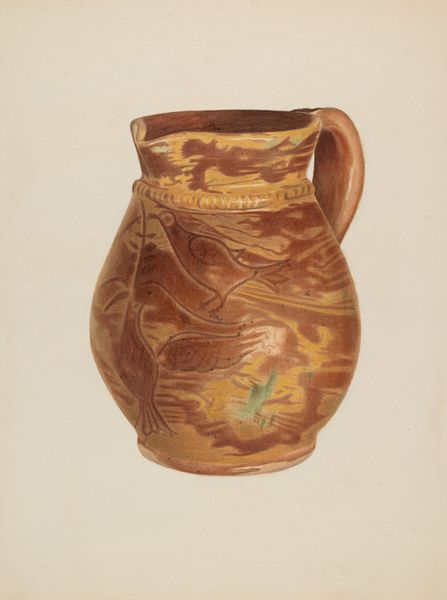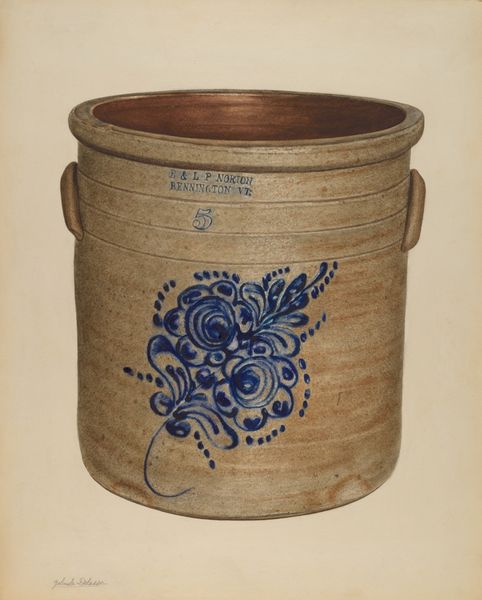
ceramic, earthenware
#
decorative element
#
pottery
#
ceramic
#
earthenware
#
stoneware
#
folk-art
#
ceramic
#
decorative-art
#
decorative art
Dimensions: overall: 47.6 x 31.5 cm (18 3/4 x 12 3/8 in.)
Copyright: National Gallery of Art: CC0 1.0
Editor: We’re looking at a "Pa. German Jar," made around 1936. It's ceramic earthenware. There’s something so charmingly simple about its form and the hand-painted floral designs, almost like a folk tale sprung to life on clay. What is your reading of it? Curator: Well, this unassuming jar sings a quiet song of resilience and cultural identity. It whispers stories of Pennsylvania German communities holding tight to their traditions in a rapidly changing world. The colors – earthy yellows, blues, and greens – echo the farmlands and forests that sustained them, each floral motif a stylized blessing for abundance. Editor: A blessing? That's interesting. I just saw it as decorative. Curator: Oh, but isn't all decoration, in some way, an incantation? A hopeful spell against the everyday drabness, against the uncertainties of life? And consider this, how each brushstroke carries a memory, a lineage. Imagine the hands that turned the clay, that mixed the pigments, that painted these delicate petals... Editor: It's a comforting thought, that connection. Did these jars have a specific purpose? Curator: Some held pantry staples, others, perhaps treasured keepsakes. But beyond utility, they were statements. "We are here. We remember. We create beauty." Editor: So, more than just a container. A vessel of cultural memory, really. I never considered folk art in that light before. Curator: Exactly! And perhaps that's the most beautiful thing about art: it invites us to look beyond the surface, to unearth the stories hidden within. What new wonders might await us, eh? Editor: Definitely gives you a deeper appreciation! Thanks for that, I learned so much!
Comments
No comments
Be the first to comment and join the conversation on the ultimate creative platform.
